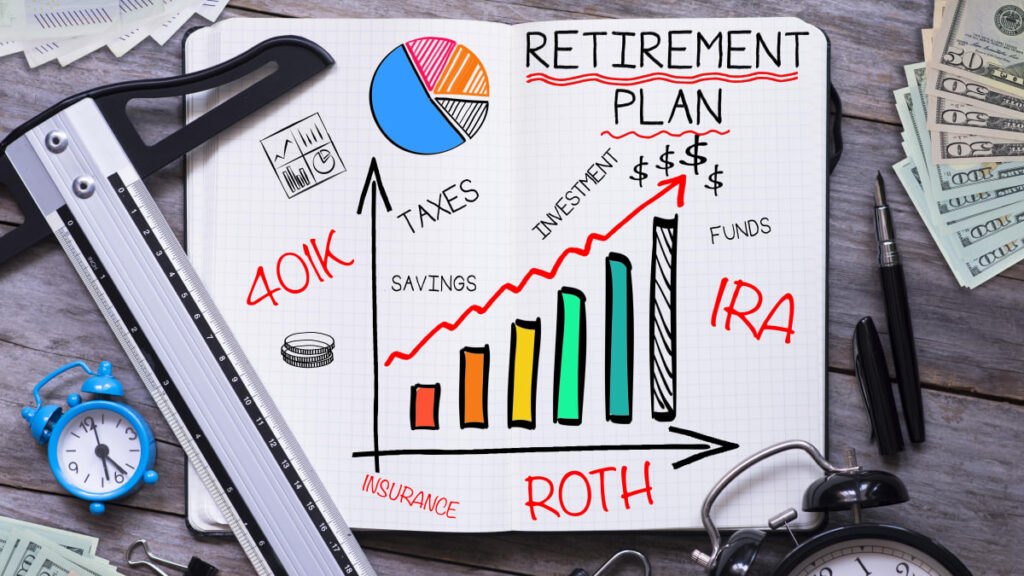Turning Goals Into Growth: Aligning Your Portfolio With Your Financial Vision
Investing isn’t just about buying stocks or bonds—it’s about building a path toward your life goals. Whether you’re planning for retirement, funding your children’s education, or simply growing your wealth, aligning your portfolio with your financial vision ensures that every decision moves you closer to where you want to be.
In today’s fast-paced financial landscape, it’s easy to get lost in market noise. Without a clear strategy, investors risk disorganisation, impulsive decisions, and missed opportunities. By organising your portfolio and aligning it with your objectives, you gain clarity, control, and confidence.
Why Organising Your Portfolio Matters
A well-structured portfolio is the foundation for achieving your financial goals. Here are key benefits of taking a strategic approach:
1. Clearer Financial Vision
Organisation provides a complete view of your assets, liabilities, and investment progress. Knowing exactly where you stand allows you to plan effectively and measure progress toward your goals.
2. Improved Risk Management
An organised portfolio highlights concentration risks, sector exposure, and other vulnerabilities. By understanding these elements, you can make adjustments to protect your wealth without compromising growth potential.
3. Smarter Decision-Making
When your portfolio is structured and clearly aligned with your goals, investment choices become more intentional. You’re less likely to react emotionally to short-term market swings and more likely to make decisions backed by data.
4. Better Performance Tracking
Regularly reviewing your organised portfolio allows you to track performance, identify underperforming assets, and capitalise on emerging opportunities.
See more: How to Plan for Retirement: Strategies from Sydney’s Best Advisors
Strategies to Align Your Portfolio With Your Goals
Aligning your investments with your financial vision requires both planning and discipline. Here are practical strategies:
1. Define Your Financial Goals Clearly
Start by outlining short-term, medium-term, and long-term goals. Examples include:
- Short-term: Saving for a vacation, emergency fund
- Medium-term: Home purchase, business investment
- Long-term: Retirement, legacy planning
Having clearly defined goals shapes the risk profile and allocation for each portion of your portfolio.
2. Categorise Assets by Goal
Allocate specific assets to specific goals. For example:
- Equities for long-term growth
- Bonds or fixed-income for stability and income
- Cash for emergency funds or near-term spending
This ensures that each investment is working toward a purpose rather than being randomly distributed.
3. Diversify Strategically
Diversification reduces risk and improves resilience. Spread investments across:
- Asset classes (stocks, bonds, real estate)
- Geographies (domestic and international markets)
- Sectors (technology, healthcare, energy)
Diversification shields your portfolio from unexpected market swings while allowing growth opportunities.

4. Adopt a Lifecycle Approach
Your risk tolerance and investment horizon change over time. Tailor allocations based on life stage:
- Early career: Higher risk for growth potential
- Mid-career: Balanced growth and income
- Pre-retirement: Focus on preservation and predictable returns
A dynamic allocation ensures your portfolio continues to support your evolving financial vision.
5. Rebalance Regularly
Market movements can shift allocations away from your target. Rebalancing—ideally every 3–6 months—keeps your portfolio aligned with your goals, risk tolerance, and desired outcomes.
Tools, Examples, and Tips for Smarter Investing
1. Portfolio Management Platforms
Platforms like Morningstar, Personal Capital, or Sharesight consolidate all holdings, track performance, and provide detailed analysis, helping you make data-driven decisions.
2. Scenario Analysis
Use spreadsheets or digital tools to simulate potential market scenarios. This helps identify how your portfolio might react to economic shifts and ensures your strategies are stress-tested.
3. Goal-Based Investing Tools
Apps like Wealthfront or Betterment allow investors to link specific investments to distinct goals. This makes monitoring progress intuitive and simplifies portfolio adjustments.
4. Regular Financial Reviews
Schedule quarterly or semi-annual reviews to evaluate your progress, track performance, and make informed adjustments. Routine assessments ensure your portfolio stays aligned with both market conditions and personal objectives.
5. Keep Learning
Markets evolve rapidly. Staying informed about macroeconomic trends, technological innovations, and global events ensures your portfolio is adaptable and resilient.
Conclusion
Turning your goals into growth is about more than picking the right assets—it’s about building a portfolio that mirrors your financial vision. By organising your investments, diversifying strategically, rebalancing consistently, and leveraging smart tools, you gain clarity, control, and confidence. A well-aligned portfolio transforms your financial objectives from abstract ambitions into measurable, achievable results.
FAQS
Aligning your portfolio ensures that every investment works toward a specific goal, whether short-term, medium-term, or long-term. This approach reduces wasted capital, improves risk management, and allows for clearer progress tracking, ultimately turning financial ambitions into measurable, achievable outcomes.
Investors should review their portfolio every 3–6 months. Rebalancing maintains the intended allocation, keeps risk within acceptable levels, and ensures investments remain aligned with evolving life goals, helping you stay on track toward achieving financial objectives without being derailed by market volatility.
Goal-based investing tools like Wealthfront, Betterment, and digital portfolio dashboards allow investors to connect specific investments to specific objectives. These platforms track progress, provide insights, and simplify adjustments, making it easier to manage multiple goals efficiently and maintain portfolio alignment with personal ambitions.
Diversification spreads risk across asset classes, sectors, and geographies. This approach protects against losses in any single area while providing growth opportunities. In goal-based investing, diversification ensures that different objectives—short-term cash needs, medium-term projects, and long-term wealth—remain insulated and on track.
Begin by clearly defining your financial goals and timelines. Next, consolidate all investment holdings and categorise them according to risk, asset type, and purpose. This foundation allows you to structure a portfolio that directly supports your objectives, providing clarity and control over your financial journey.


















